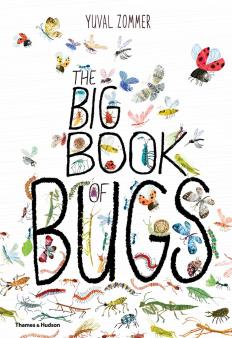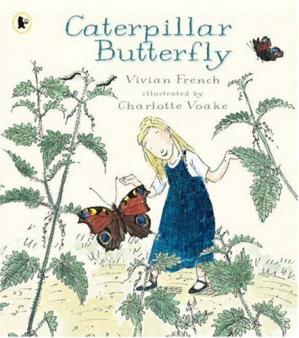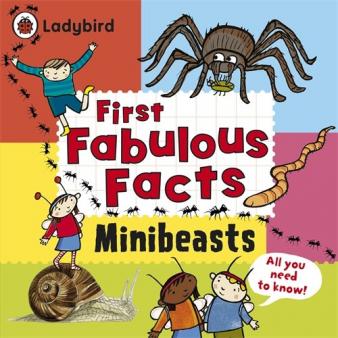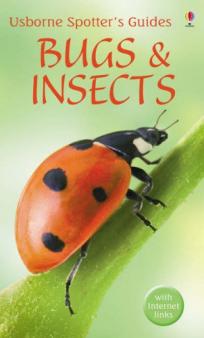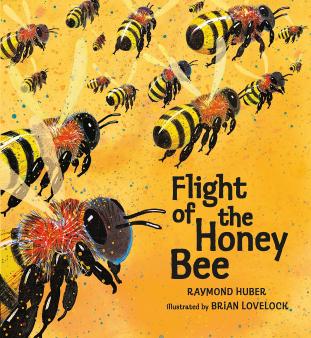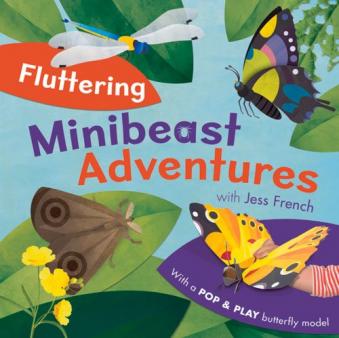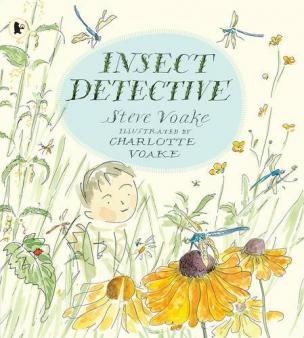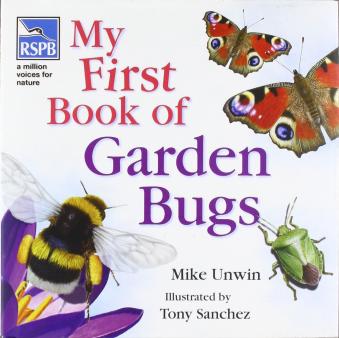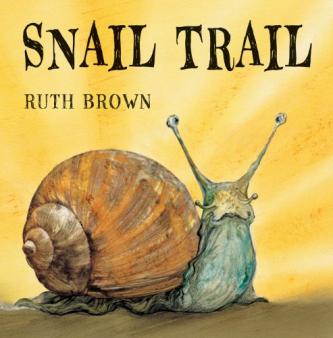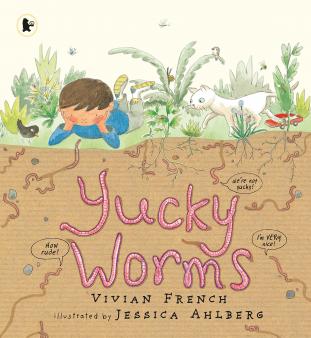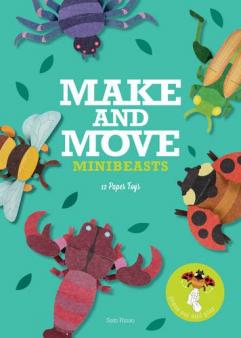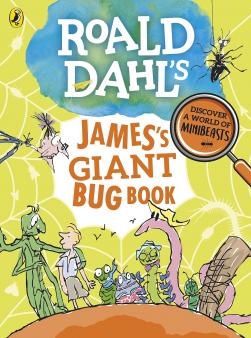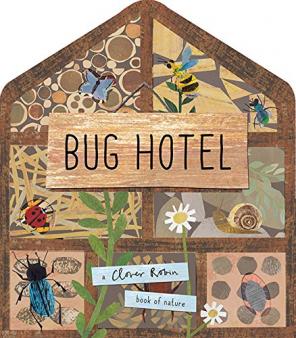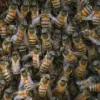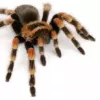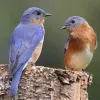Minibeasts

Minibeasts are ‘small creatures’, like worms, snails, insects and spiders. The scientific term for them is ‘invertebrates’ – a creature without a backbone.
Because they don’t have a backbone, minibeasts tend to have other structures which support and protect them. Snails have shells, while many insects and spiders have an ‘exoskeleton’, which is a hard casing on their outside.
There are over 25,000 minibeast species in Britain.
Top 10 facts
- Invertebrates make up approximately 97% of the creatures living on Earth.
- Minibeasts are a great source of protein. Many countries eat insects as part of their diet. Deep fried crickets are a popular snack in Thailand, while ant soup is a warming treat in China. Insects are a very sustainable source of food and may become more widely eaten in the future.
- The colour and appearance of minibeasts are key to their survival. Many minibeasts have very good camouflage, blending them into their environment so that they can hide from predators or creep up on prey. Other minibeasts, like the monarch butterfly, have bright colours to warn predators that they are either poisonous or might taste disgusting.
- Most minibeasts tend to use their senses of smell, touch and taste to experience the world around them, rather than their sight or hearing. They use features such as antennae, small hairs or taste receptors to do this.
- Minibeasts are crucial for our survival: they recycle dead matter and waste products; they help with plant pollination; they are a crucial source of food in the ecosystem.
- Seaside minibeasts include crabs, cockles, muscles, jellyfish, corals and starfish.
- Some minibeasts produce by-products which humans use. Honey is a well-known by-product from bees, but we also get wax from them. Beeswax is used in lip balm as well as to make candles and to polish wood. Silk comes from silk worms, and scarlet-red food and cosmetics colouring often comes from a secretion produced by the Cochineal bug.
- Minibeasts make their homes in lots of places, both inside our homes (spiders) and outside under logs, stones or leaves, in ponds, in trees, in grassand in soil.
- Some minibeasts eat plants or flower nectar; others eat other minibeasts!
- Invertebrates have been living on our planet for about 550 million years!


Boost Your Child's Maths & English Skills!
- Start your child on a tailored learning programme
- Weekly resources sent direct to your inbox
- Keep your child's learning on track
Did you know?
- The Lundy Cabbage Flea Beetle is only found on the Isle of Lundy and no-where else in the world.
- Comma caterpillars disguise themselves as bird poo!
- Slugs have four noses.
- Some worms have ten hearts!
- Worms have existed for around 600 million years.
- The Giant African Earthworm grows up to 6.7 metres in length.
- Dragonflies have been around on Earth since before the dinosaurs.
- Butterflies and caterpillars use their feet to taste with.
- The Giant African Land Snail can grow to 30cm in length.
Look through the gallery below and see if you can spot the following:
- A pond habitat
- Caterpillars
- Bluebottle fly
- Slug
- Ladybird
- Monarch butterfly
- Earthworm
- Hunting spider
- Millipede
- A log-pile habitat
- A hornet
- Snails
Gallery
About
Minibeasts are split into three main sub-groups or classifications: arthropods, molluscs and annelids.
- Arthropods include insects, arachnids (spiders), crustaceans (which have a hard shell or case on the outside) and miriapods (creatures with lots of legs).
- Molluscs often have a shell like a snail.
- Annelids are worms.
Minibeasts can live in most habitats, from dry deserts to lakes. They often live in what are called ‘micro-habitats’, like a stone, a log, a tree or some dead leaves. These might be found in a range of larger habitats, but are often perfect for minibeasts to live in or under. It is very easy to find minibeast habitats as they can and do live almost everywhere. Some people build what are called ‘bug hotels’, built using natural materials to create a micro-habitat.
Minibeast diets are quite varied and many have highly-designed mouth parts to help them access their food. Some minibeasts feast solely on plant materials while some eat sap and nectar. Other minibeasts eat other insects or even larger dead animals. Many minibeasts eat waste materials and dead matter.
Minibeasts move in a variety of ways. Some, like water boatmen, are very good at swimming; while many, like bees, flies and dragonflies, have wings which enable them to fly.
Minibeasts have a varied number of legs – anything from none if you are a snail or slug to perhaps 750 if you are certain species of millipede. Minibeasts use these legs to help them crawl. Some minibeasts even jump – a grasshopper can jump up to 10 times its length when it jumps high, and can jump 20 times its length when it jumps long.
Minibeasts reproduce in a variety of ways. Many lay eggs which hatch into larvae. Most minibeasts, for example a butterfly, change in form from being young (caterpillar) to an adult (butterfly) – this process is called metamorphosis. Some minibeasts, such as grasshoppers, don’t undergo metamorphosis, but hatch looking very like the adult form and stay the same throughout their life.
Minibeasts are of great importance to nature for a number of reasons: they are eaten as a food source by birds and other creatures, in the early stages of a food chain; they help to pollinate plants; they are also often decomposers and eat dead and decaying matter, essentially recycling nutrients back into the ecosystem. They also indirectly help us with farming and growing food as many minibeasts eat other minibeasts that would otherwise destroy our crops.
Humans would not survive without minibeasts, so we need to make sure we take care of them and their habitats.
Words to know:
Annelid: a creature that has one main body part that is segmented. Worms and leeches are annelids.
Arachnid: the scientific name for spiders.
Arthropod: a large group of creatures which have a segmented body; many jointed legs and an exoskeleton. Insects, spiders, molluscs and myriapods are all arthropods.
Camouflage: when a creature has specific colourings, shape and texture that allow it to blend into its habitat. Camouflage helps creatures to hide from predators, or enables them to creep up on prey.
Carnivore: a creature with a meat-based diet.
Crustacean: most crustaceans have an outer casing or shell; 10 legs or more; and two antennae (e.g. a crab).
Decomposer: decomposers are creatures that eat dead and decaying matter.
Habitat: a creature or plant’s natural environment, where it lives.
Herbivore: a creature that has a plant-based diet
Insect: a creature with six jointed legs and two eyes. They have two antennae, three body parts and often they have wings.
Invertebrate: a creature without a backbone.
Larvae: the very early form of many minibeasts that hatches from an egg. It usually changes into the adult form through metamorphosis.
Metamorphosis: a process of change that often occurs during a minibeast’s lifecycle (for example, when a caterpillar turns into a butterfly).
Minibeast: a small creatures without a backbone. Often referred to as invertebrates.
Mollusc: these creatures have one main body part and may or may not have a shell (for example slugs and snails).
Myriapod: a creature with ‘many legs’ – this could be anything up to 750 in the case of centipedes or millipedes!
Spider: eight-legged creatures with two parts to their body (head and thorax joined as one part and their abdomen as a second part). They also have two pincers.
Related Videos
Just for fun...
- Download a minibeast spotting sheet
- Play some interactive insect games online
- Complete a minibeast quiz
- Do some minibeasts colouring in
- Make a butterfly mask or a rock bug
- Play an interactive version of the Mancala Snails game, based on an ancient African game of strategy
Best books about minibeasts for children
Find out more:
- The BBC Bitesize guide to minibeasts
- An A to Z of minibeasts from Wildlife Watch
- Explore minibeasts and how they move with some minibeast dancing moves on the BBC School Radio website
- Loads of minibeast information
- Learn to identify a bug on Buglife
- Young People’s Trust for the Environment minibeast facts
- A huge minibeasts teachers' information pack to download for free
- Classify minibeasts correctly with TheSchoolRun's minibeast worksheet
- Find out more about researching and classifying invertebrates with TheSchoolRun's worksheets
- Read the autobiography of Herman the worm
See for yourself
- Use this minibeast spotter sheet in your garden or local park or woodlands, to identify some minibeasts
- Build a minibeast hotel and see who checks in
- Do some pond dipping (with an adult) and find out which minibeasts like water
- Visit a local zoo, wildlife centre, or country park to find out more about minibeasts
- Join in a minibeast safari with your local wildlife trust
- Watch a minibeast adventure with Jess on CBeebies
- Watch videos of lots of creepy crawlies including treehoppers, moths, ladybugs and caterpillars
- Read a minibeast factsheet from the Young People's Trust for the Environment
- Search for minibeasts in your garden and use TheSchoolRun's minibeast recording sheet to show what you found
- Make your own worm-friendly habitat! Download the Go Wild for Worms booklet from Wild About Gardens
Also see

Give your child a headstart
- FREE articles & expert information
- FREE resources & activities
- FREE homework help












